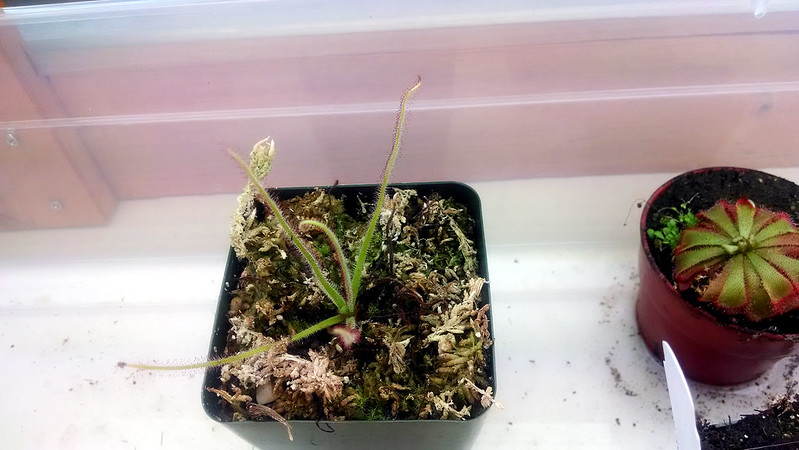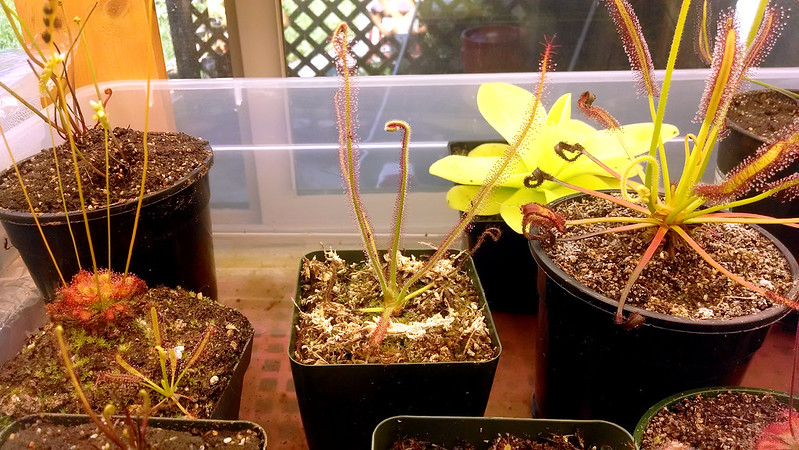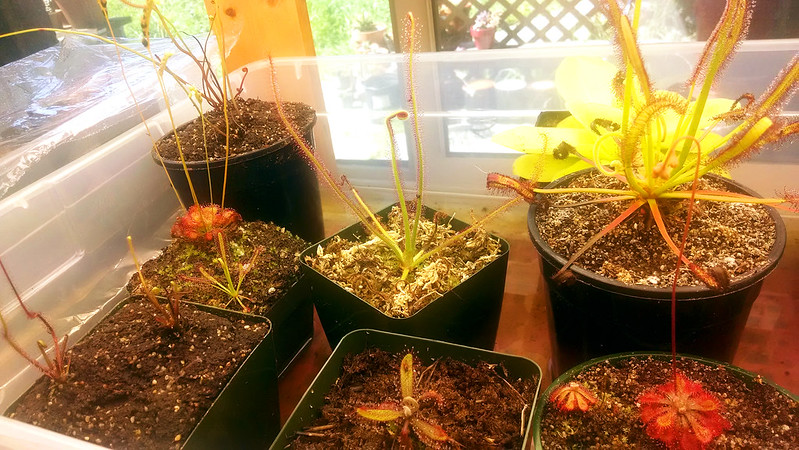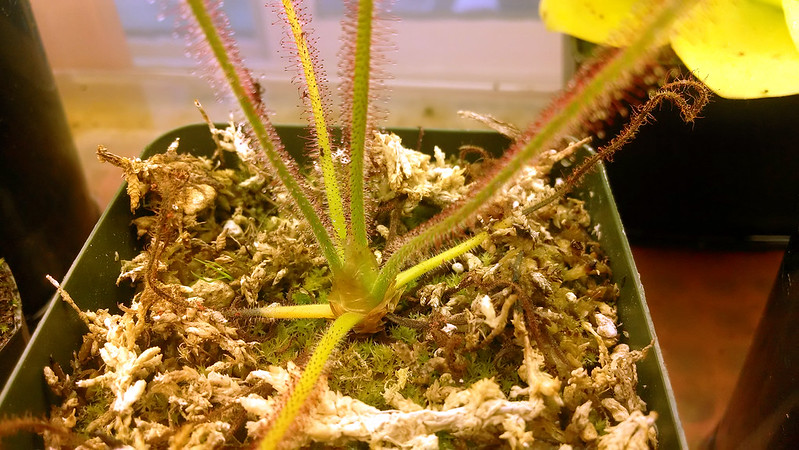This is part of a series of posts describing my experiences with different species, their culture requirements, and photos of their growth in my collection. The full series can be read here, or by species on the Series page.
Edit: There is also an updated version of this Plant Profile. Read this one first though!
I purchased my Drosera spiralis at the winter 2014 BACPS meeting on January 25th. It was labeled as D. graminifolia, which was funny, since the talk by Fernando Rivadavia that day was addressing Brazilian sundew taxonomy, and involved a reshuffling of taxa, mostly bumping a number of varieties and subspecies up into their own species, and clarifying some location-specific taxa. Most Drosera graminifolia in cultivation magically became D. spiralis that day.
 |
| My D. spiralis shortly after coming home. Four leaves, looks a bit peaky. |
D. spiralis is said to be a finicky plant. One grower at the BACPS meeting suggested that I should remember to tell it "goodnight," since they can die suddenly, for no obvious reason. However, if you can keep them alive they can be wonderful plants – the leaves can reach 8 inches in length, and they have that rare, thread-like structure.
For the first several months my plant basically looked like the above picture – limited dew production, acceptable coloration, decent growth. However, I feel like it has finally acclimated itself to my conditions, and for the last month or so has seemed to be thriving.
 |
| Five active leaves here. The longest is about 4.5 inches. |
 |
| Another angle to show all the growth. The shape of the unfurling leaf is a big distinguishing trait vs. D. graminifolia. |
 |
| These large, papery stipules are one of my favorite traits of this plant. Very interesting characteristic. |
- media: long-fiber sphagnum has produced good results for me
- light: as much as you can provide
- water: tray works well, has tolerated brief periods with the tray almost dry
- temperature: keep cool, especially at night
- feeding: 2-3 weeks is good, use smaller amounts of food
- propagation: no experience so far
Thank you for posting this. The stipules looks really unique - I remember Fernando talking about them at the meeting in January. I use the same tray for growing utrics, except I always keep the lid covered. It looks like propagating the plant will be difficult, given how few leaves it puts out.
ReplyDeleteDid this guy make it through the summer season? And if so, how are they doing now?
ReplyDeleteIt definitely did! In fact, in September/October it treated me to a lovely show of flowers. I've been meaning to update this Plant Profile. In the mean time you can check out the Drosera spiralis label to see recent posts featuring this species:
Deletehttp://www.sundews-etc.com/search/label/Drosera%20spiralis